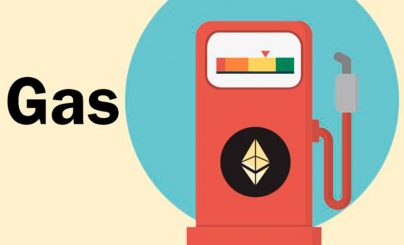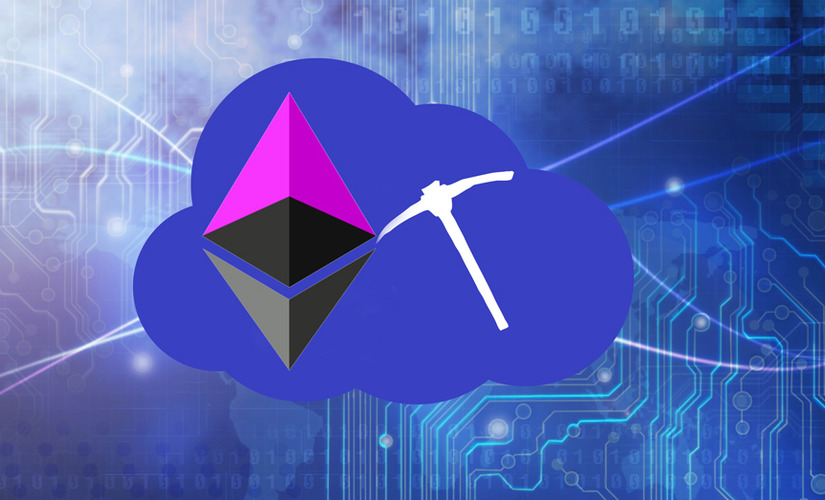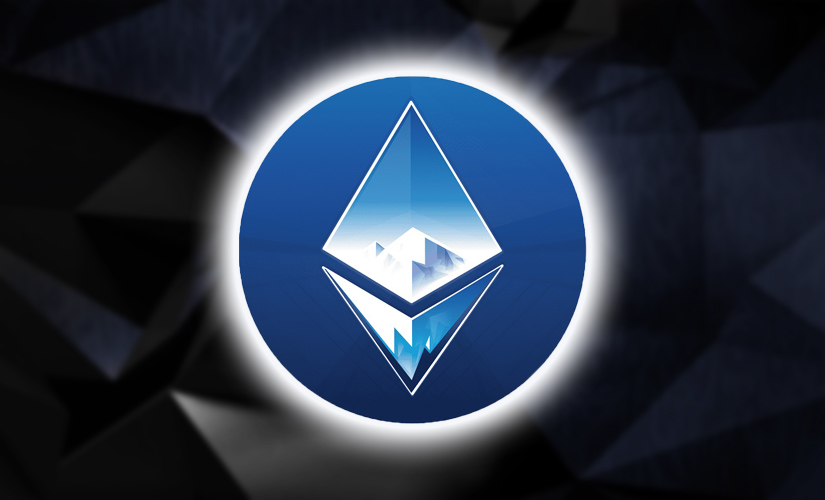Efirium-võrgus tehingute tegemiseks peavad kasutajad andma protsendi, mis on vajalik selleks, et maksta kaevuritele uute plokkide leidmise eest tasu. Komisjonitasu ühik on gaas. See väärtus konverteeritakse ETH-ks ja võetakse kaevuritelt tasu. Tehingute arvu järsu suurenemise ajal tõuseb Ethereumi gaasi hind. See on Ethereumi plokiahela probleem. Teabe omamine gaasi hetkeväärtuse kohta aitab vähendada Etheri võrgus töötamisega seotud kulusid.
Mis on gaas ja miks Ethereum seda vajab?
Ethereum on üks juhtivaid platvorme detsentraliseeritud rakenduste kasutuselevõtuks: 2021. aasta augusti seisuga on see projekt 2. enim kapitaliseeritud. Süsteemi toimimise mõistmine tagab, et plokiahelat on võrgus osalejate jaoks ohutu.
Komisjonid
Ethereum on blockchain, mis töötleb tehinguid ja täidab arukad lepingud. Ethereumi võrgus toimuvaid tegevusi valideerivad sõlmed, mida haldab kasutajate rühm, keda nimetatakse kaevuriteks.
Tehingute valideerimine ja plokiahela töös hoidmine nõuab suurt arvutusvõimsust, mille kasutamine on seotud suurte energiakuludega. Kulude katmiseks hoitakse Etheriumi võrgus komisjonitasu, mis saadetakse kaevandajatele.
ETH võrgu stabiilsus
Kaevurite töö eest makstavat tasu nimetatakse gaasiks. Gwei on eetri ühik gaasi väärtuse mõõtmiseks, mida kasutatakse ülesannete väärtuste määramiseks:
5020 $
boonus uutele kasutajatele!
ByBit pakub mugavaid ja turvalisi tingimusi krüptovaluutaga kauplemiseks, pakub madalaid vahendustasusid, kõrget likviidsust ja kaasaegseid vahendeid turuanalüüsiks. See toetab spot- ja finantsvõimendusega kauplemist ning aitab algajaid ja professionaalseid kauplejaid intuitiivse kasutajaliidese ja juhendmaterjalidega.
Teenida 100 $ boonust
uutele kasutajatele!
Suurim krüptovahetus, kus saate kiiresti ja turvaliselt alustada oma teekonda krüptovaluutade maailmas. Platvorm pakub sadu populaarseid varasid, madalaid vahendustasusid ja täiustatud vahendeid kauplemiseks ja investeerimiseks. Lihtne registreerimine, kiire tehingute kiirus ja usaldusväärne rahaliste vahendite kaitse teevad Binance'i suurepäraseks valikuks mis tahes taseme kauplejatele!
- Ülekandmine märgid või mündid.
- Tasakaalu kontrollimine.
- Aruka lepingu funktsioonide kutsumine.
Etherium saab korraga töödelda piiratud arvu tegevusi, seega toimib Gas piirajana, mis takistab plokiahela ülekoormust.
Keeruliste tehingute puhul, mis nõuavad palju arvutusvõimsust, on vaja täiendavat gaasi.
Kui kasutaja soovib tehingut võrgus kiiremini lõpule viia, võib ta maksta kõrgemat tasu, et tõsta selle prioriteetsust. Ethereumi osalejatel on ka võimalus määrata gaasi limiit, st määrata maksimaalne summa gaasi, mida saab tehingule kulutada. Kui selline limiit on aga madal, ei võta kaevandajad tehingut kinnitamiseks.
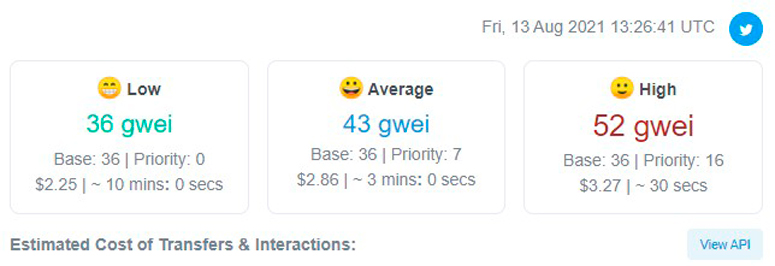
Ethereum gaasi hind
Komisjonid on mis tahes plokiahela liikumapanev jõud, kuna need aitavad rahastada kaevandajaid, reguleerida tehinguid ja seada tehingud tähtsuse järjekorda. Ilma gaasitasudeta oleks kinnitused võrgus peatatud ja Ethereum ei saaks toimida.
Tegelik maksumus
Tasud makstakse Ethereumi müntides. Gaasi hind Ethereumi võrgus on märgitud Gwei's, mis on võrdne 0,000000001 ETH-ga (1 miljardikosa eetrist). Tehingutasude jooksva väärtuse jälgimiseks plokiahelas rakendavad kasutajad eriteenuseid: ETH Gas Station, Gas Now. Gaasi jälgijad näitavad, kui palju maksab tehingu töötlemine võrgus praegusel hetkel ja kui kaua võtab aega, et tehing plokiahelasse lisada.
Saa peamised uudised krüptoraha maailmast otse oma e-posti kontole
Hindade jälgimine
ETH gaasi väärtus muutub sõltuvalt kogunenud tehingutest ja hetkel töötavate kaevurite arvust. Kui võrgus osaleja näeb, et gaasi väärtus on 50, tähendab see, et see kasutaja saab nüüd edukalt sooritada tehingu Ethereumi plokiahelas ~50 gwei eest.
Tasude määramiseks korrutage 50 gwei 0,000000001 eetriga ja gaasi limiidiga (maksimaalne summa gaasi, mida saab ühe tehingu jaoks kulutada).
ETH müntide ülekandmise puhul on piirang 21 000 ühikut.
Seega, järgides lihtsat valemit:
Gaasi limiit * jooksva hinna kohta gwei * 0.000000001 ETH
saate hõlpsasti välja arvutada tasu eetri ülekande eest:
21 000 x 50 x 0,000000001 = 0,00105 ETH.
Krüptoraha rahakotid, nagu MetaMask, lihtsustavad kasutajate jaoks gaasiarvutusprotsessi, võimaldades neil valida aeglase, keskmise või kiire töötlemiskiiruse.
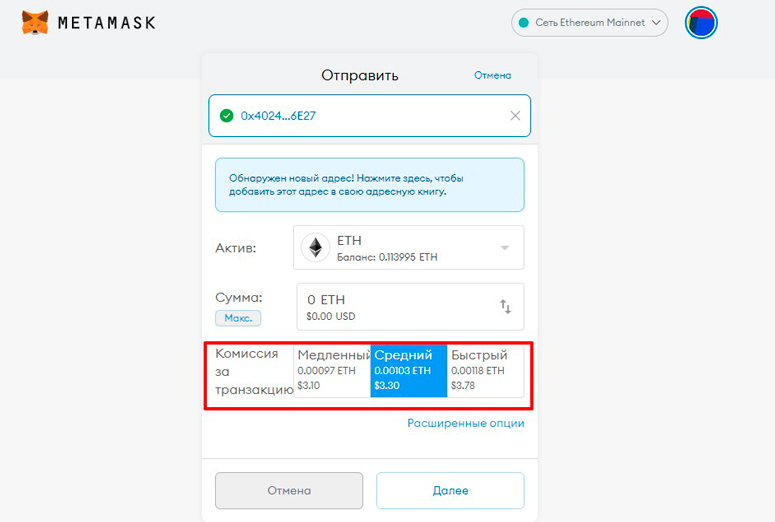
Hinnaalandus
2020. aasta augustis saavutas Ethereumi keskmine tehingutasu rekordilise taseme $6,04. See tõus langes kokku detsentraliseeritud finantsprotokollide, nagu Uniswap, suurenenud aktiivsusega. Samas tõusid Ethereumi tehingutasud 2021. aastal plokiahela ajaloo kõrgeimale tasemele. Ühe vahetada detsentraliseeritud börsil võib maksta nii palju kui $300.
Sellest hoolimata on nutikad kasutajad leidnud võimalusi, kuidas vähendada Etheriumiga seotud tehingukulusid. Näiteks kui optimeerite tehingu täitmise aega, saate teha tehinguid kasumlikumalt ja maksta minimaalseid tasusid.
Tasud varieeruvad päeva jooksul sõltuvalt sellest, kuidas kasutajad maailma eri osadest ärkavad ja aktiveeruvad. Komisjonitasud on suuremad tööpäevadel ja väiksemad laupäeviti ja pühapäeviti. Seega on kõige lihtsam tehinguid teha nädalavahetustel.
Paxful platvormi analüütikud on tuvastanud kõige kiiremad ja kallimad ajaperioodid: kell 8.00 kuni 13.00 Põhja-Ameerika ida-aeg (kell 16.00 kuni 21.00 MSC). Nendel kellaaegadel on kõige aktiivsemad kasutajad Euroopast ja USAst.
Ethereumi kasutamine väheneb kesköö ja 4 a.m. (UTC) vahel, mis on 3 kuni 7 MSC.
See on tingitud sellest, et USAs on enamik plokiahela osalejaid magamas, Euroopas on varahommik ja Aasias on tööpäev lõppemas.
Mõju kaevuritele
Kuigi Ethereumil on hästi kavandatud süsteem tehingute töötlemiseks ja prioritiseerimiseks, ei toimi see praktikas tõrgeteta.
Blockchaini tasud kõiguvad sõltuvalt arvutusvõimsuse pakkumisest ja nõudlusest. Kui Efirium seisab silmitsi nõudluse suurenemisega, kuid tal ei ole piisavalt kaevandajaid, et seda tehingumahtu toetada, on ta ülekoormatud. See toob kaasa gaasihinna tõusu.
Kasutajad soovivad maksta kõrgemaid tasusid, et tõsta oma tehingute prioriteetsust.
Selle tulemusena suureneb tehingute keskmine maksumus ja osalejad peavad maksma tavapärasest rohkem raha. Plokiahela tasud võivad jääda maksimaalseks nädalateks või isegi kuudeks. Etheriumile on iseloomulik ülekoormus pulli ajal. Tasud normaliseeruvad alles siis, kui nõudlus langeb.
Kokkuvõte
Efirium omab praegu miljardite dollarite väärtuses varasid: kommunaalmärgid, krüptovaluutad(NFTd), stabiilseid münte, väärtpabereid ja paljusid muid varasid. Nagu DeFi 's detsentraliseeritud finantssüsteem kasvab, suureneb loomulikult ka nõudlus plokiahela järele ja plokiahela kasutamise kulud tõusevad vastavalt.
Sellegipoolest on Etheriumi töös juba tehtud muudatusi, mis aitavad vähendada gaasi hinda ja muuta plokiahela atraktiivsemaks ja turvalisemaks. Näiteks on Ethereumil kavas minna 2022. aasta alguses üle Proof-of-Stake konsensusalgoritmile, mille ettevalmistused toimuvad kogu 2021. aasta jooksul. Ja 5. augustil on plokiahelas juba kogenud Londoni kõvavarda, mille eesmärk on muuta kiirust ja soodustada võrgu kaevandamine.
Korduma kippuvad küsimused
❓ Kus ma saan vaadata gaasi hindu?
Hinnagraafikud ja ajaloolised tasude andmed leiate Etherscani teenuse veebisaidilt.
⛔ Kas gaas ja eeter on sama asi?
Gaas ise ei ole võrdne eetriga, kuigi tasud on ETH-s. Tokenid, mida peetakse "gaasiks", kulutatakse ainult kaevurite premeerimiseks tehingute kinnitamise eest.
✅ Kuidas aitab Ethereumi skaleerimine vähendada tasusid?
Kui Ethereumi plokiahelas minnakse Ethereum 2.0 raames üle Proof-of-Stake algoritmile, loobuvad kasutajad oma eetritest, et neid saaks panustada, ja muutuvad võrgu valideerijateks. Energiamahuka kaevandamise asemel (nagu Proof-of-Work'i puhul) hakkavad steakide omanikud tehinguid valideerima, teenides oma töö eest tasu.
🔽 Kuidas vähendada DeFi-gaasi hinda?
Ühendage omavahel seotud tehingud ja liigutage samu žetoneid võrgus ühe maksega. Hoidke silma peal võrgu ülekoormusel. Valige madala prioriteediga tehinguid ja ärge püüdke konkureerida juba pooleliolevate tehingute suure hulga vastu.
🍽 Kes on "gaasisööjad"?
Targad lepingud või protokollid, mis tarbivad võrgus kõige rohkem gaasi: detsentraliseeritud protokollid (Uniswap, SushiSwap, 1inch), NFT vahetused (OpenSea) ja NFT mäng Axie Infinity ning Tether stablecoin.
Kas tekstis on viga? Märkige see hiirega ja vajutage Ctrl + Sisesta
Autor: Saifedean Ammous, krüptorahanduse ekspert.
